Table of Contents
Want to grow lettuce at home but need a caring plan for when to plant lettuce in the UK? Don’t worry; we will elaborate on caring tips and the best time to plant lettuce.
Lettuce is a widely popular plant among salads and sandwiches and one of the UK’s most valuable and versatile crops. People adore it because it grows fast and is simple to harvest. Another reason to grow it at home is the taste, which is very distinguishable and scrumptious compared to those available in the market. These plants yield new leaves within a few weeks.
Lettuce grows and provides for a long time, making them a great plant for decorating porches, balconies, decks, and patios. Throughout the article, we will help you with choosing Lettuce varieties, planting methods, caring tips, as well as how to harvest it.
How To Grow Lettuce Plants At Home
1. Pick a Variety and Gather Essentials
Lettuce is available in numerous varieties, not only differ in taste but also in colour, surface, and size. Specifically, there are four main types of lettuce in particular: butterhead, iceberg, Romaine, and loose leaf. Iceberg is the fastest-growing among all and has a crunchy and crispy characteristic. It also has the longest crop cycle. At the same time, butterhead and loose leaf are ready to harvest quickly.
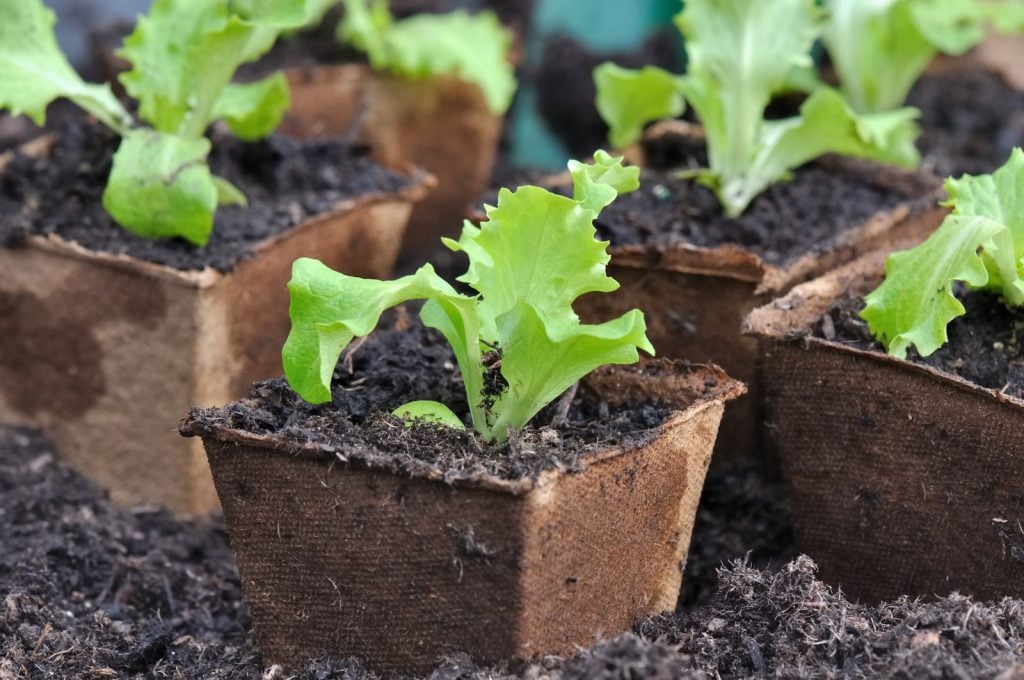
Some varieties are affected by the sun’s heat and lose their full potential to absorb nutrients because higher temperatures block cupping, which is the main developmental process in heading plants like Lettuce.
Varieties that do not grow well in higher temperatures:
- Ruby Red ( it has red pigments that absorb more heat and cause a lack of nutrition when exposed to extreme heat)
- Iceberg ( it becomes bitter due to heat stress and does not form well)
Varieties that go well at a house in containers and vegetable gardens:
- Romaine (extremely scrumptious and widely used in many modern recipes)
- ChrispHead ( also known as summer queen, has flat leaves and is suitable for humid and hot climates.)
- Loose leaf (it is sustainable in non-frost regions and can sustain in moist soil.)
Container
Plant containers are the best when there is limited space in the house. And when it comes to growing lettuce indoors, they go best in medium-sized containers due to their shallow root system. Yet, if you want to grow them outdoors, go with a large pot, or you can even go with a container salad garden where you can plant other salad plants with them for easy access. Another crucial thing is that the container must have drainage holes in it (ensure this before planting).
Seeds
One last and final among the essential things are lettuce seeds. You can choose from the above-mentioned varieties, such as Chrisphead or Loose Leaf (better for indoor containers). Seeds are available throughout the year.
2. Prepare Conditions
We have collected a specific variety of seeds, decided the place to plant them, and the next thing is to prepare the atmosphere for their substantial, spontaneous growth.
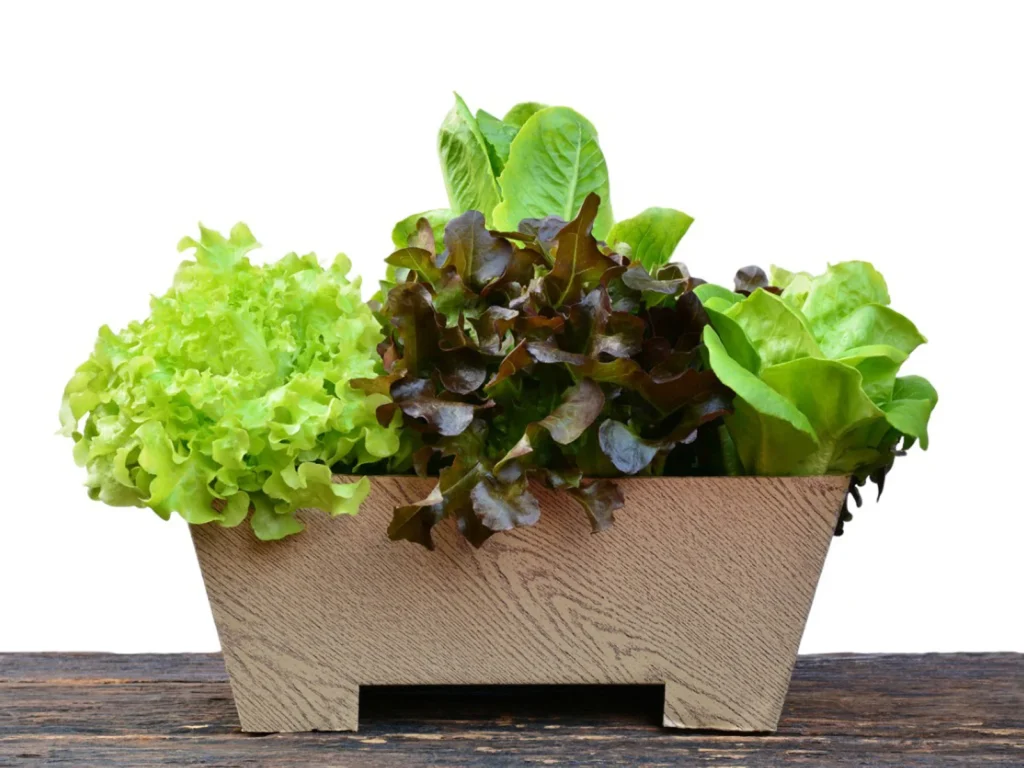
Soil
The potting mix or ground soul is where the plant will grow and absorb essential nutrients. Fresh soil specifically created for vegetable growth will be the best welcome for lettuce seedlings and will keep them happy and flourishing. Do not forget the drainage holes. A pot with a drainage hole will keep extra water running out, keep the roots intact, and will not let the soil become soggy, which often causes root rot. This will also minimize the danger of pests, diseases, and weeds.
Sunlight
If growing indoors, choose a place with sufficient sunlight, such as a room window or transom window, where it can have at least six hours of direct light. A south-facing window in your house will be the most appropriate place to put your lettuce container for enough sunlight and continuous growth.
You must keep it checked because if exposed to direct sunlight on the scorching hottest days of summer, it will burn its leaves. However, if your house lacks the mentioned things, you can invest in artificial lights specifically designed for indoor planting.
The temperature while it germinates:
To germinate the seeds appropriately and at a fast rate, provide them with a setting where the temperature stays between 55 and 65 degrees Fahrenheit until it grows into a seedling. As you encounter a growth, you will have to maintain it between 50 to 60 degrees Fahrenheit. Otherwise, it will start to flower. The reason behind keeping it from bolting (prematurely germinating seeds) is to maintain the taste, which otherwise would become bitter. Lettuce plants grow in shallow depths, so it is a must for you to sow them at a decent depth (topsoil) for better and faster germination. This way, you can ensure they are spreading out instead of interfering with each other.
3. Best Time for Planting
Now you will get to know when to plant lettuce in the UK and what is the best way to plant it.
Which Season and Month should be picked to plant Lettuce
They can be sown in many months. If you are thinking of growing indoors, Lettuce can be planted in late February or early May and will yield leaves in summer.
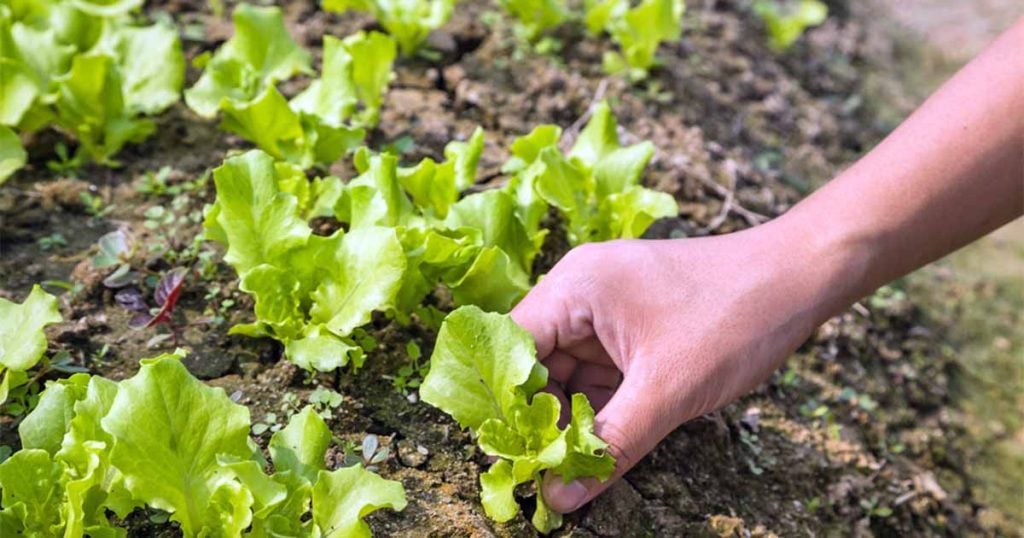
You can plant outdoors (covered with fleece) in late March or late July and harvest in summer or autumn.
If you plant them in early August under the protection of cloches from September, you can have the delicious lettuce leaves in early winter.
Early vs Late Seed Sowing
If you want to take full advantage of tasty lettuce, the earliest you can plant it is after the last frost. Most of the varieties start to flourish in just a few weeks and can not survive in a hard frost.
Specifically, for a colder area, you can sow it indoors four weeks before the last killing frost and then transplant it in early May outdoors under protection.
Certain varieties, such as icebergs, will be able to grow even if you sow them eight weeks before the killing frost.
For late sowing, it is recommended by gardening professionals to sow it in the evening of a hot spell, offer it shade and keep it cool. Water it frequently. You may choose varieties that can bear much heat.
Best Way for Planting in Containers
If you ask how to grow it from seeds, the procedure is pretty straightforward. Pick a seed tray, fill it with compost to the top, scatter one seed in each cell, coat it with a thin compost layer, and water well.
Protection from frost damage is essential when planting lettuce, especially when plating early. Covering them with protective gardening equipment should be your top priority.
4. How To Grow and Maintain
They do not require any extra care, but still, a standard plan for caring for lettuce will be cited here.
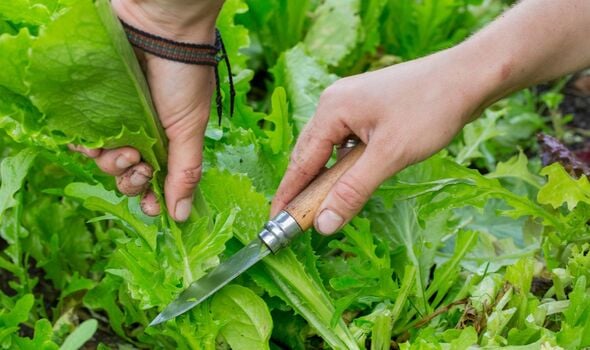
Growing Tips
- A well-prepared soil is essential before sowing the seeds. Moreover, they should also not be sown so deep since they need sunlight and prefer to grow in shallow depths.
- Proper space (1-2 inches between each plant) is also critical when sowing particular varieties, such as Loose-leaf varieties.
- For an endless supply of lettuce, sprinkle more seeds every two weeks.
- Water thoroughly before you shift them from pots to garden beds.
- Cover the soil with a straw bale to keep it cool in late summer, and moisten well. Repeat the process for a headstart with appropriate soil in autumn.
Caring Tips
- Give it a substantial amount of water.
- Maintain temperature because too hot will cause it to bolt, while too cold will cause it to die.
- Consistently moisten the soil to help its leaves grow rapidly.
- If the head of the plant is droopy or yellowish in color, these are the indications they are receiving less water.
- Use protective measures to save your lettuce, such as fleece, if cultivating for summer.
- It can be damaged by many pests like aphids, cutworms, caterpillars, and slugs. Barrier herbs are the best to deter them. Onion or garlic plants, along with lettuce, will protect it from potential dangers.
Keep Bolting Away
- Bolting occurs due to overexposure to heat and sunlight. This could be caused by natural phenomena (shift in the day length). This negative effect can result in lettuce leaves becoming bitter.
- Provide it with shade to delay the bolting of the lettuce plant. However, they should be watered adequately throughout the warmest parts of summer. Trees or taller plants can be planted around them if planted outdoors, which will act as a filter and decrease the heat effect on them.
- For the container plant, you must prepare the potting mix first.
5. Harvest
We have grown a full crop now, and it is time to get the taste of our grown plant. If you ask what is the best time to harvest lettuce, there are some critical factors that are worth consideration. First, morning is the best time to harvest tender, juicy young lettuce plants grown in full size. Harvesting them at a young age is a major factor because you don’t want them to become bitter since they get bad quickly when fully matured.
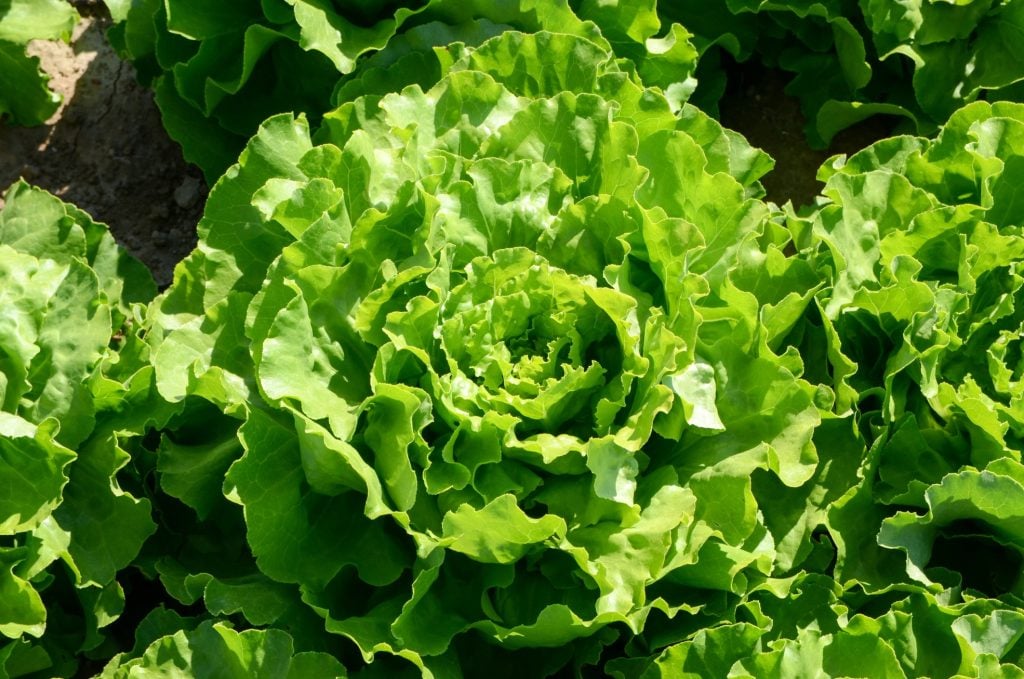
Tips for harvesting
- Water the Crisphead lettuce for 15-20 minutes before harvesting in the evening if you are not an early bird. This variety is ready for harvest when the centre is firm, and the leaves are firmly compacted. However, we prefer harvesting in the morning for crispy and fresh leaves.
- Loose leaf lettuce and other varieties can be harvested by digging an inch and getting it out of the surface. Then, cut the leaves.
- Almost all varieties can be harvested by removing the outer layer of leaves before maturity so the center leaves continue to grow.
Storing Tips:
- Store lettuce leaves in loose plastic bags for more than a week in the refrigerator to retain freshness and crispiness.
- Nothing else can retain the freshness better than storing them in the freezer with newspaper or paper towels for a couple of weeks.
- You can get rid of the bitter taste of your freshly harvested crops by keeping them in the freezer for one day.
Conclusion
To conclude, we learned a step-by-step guide on when to plant lettuce in the UK and a handful of tips for caring for them. The first step is to collect the variety and things necessary for growing lettuce. Then preparation of soil, sunlight, and other elements necessary for its growth.
In the third step, we learned the perfect time, months, and ways to sow the seeds, followed by the fourth step, which included growing and caring and information on bolting prevention tips.
Then finally, in the fifth point, we touched on tips for harvesting and storing the lettuce.
Overall, the information on this page will act as a guide with all about growing, caring, and harvesting. We are curious about hearing how it helps you. Ace your planting game!

![How and When To Grow Lettuce Plants [UK] How To Grow Lettuce Plants At Home](https://www.thearches.co.uk/wp-content/uploads/How-To-Grow-Lettuce-Plants-At-Home.jpeg)



